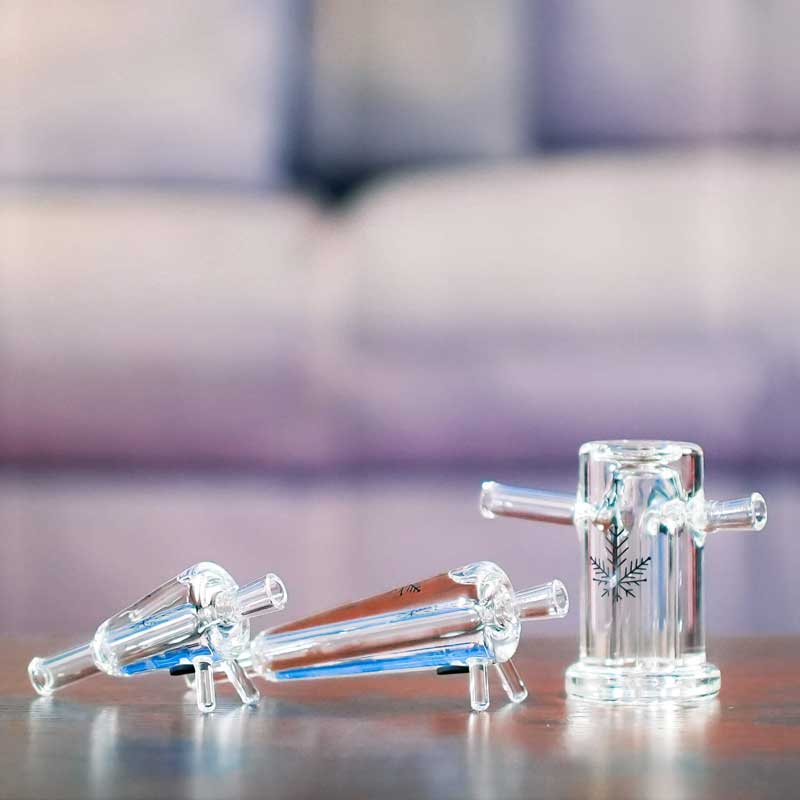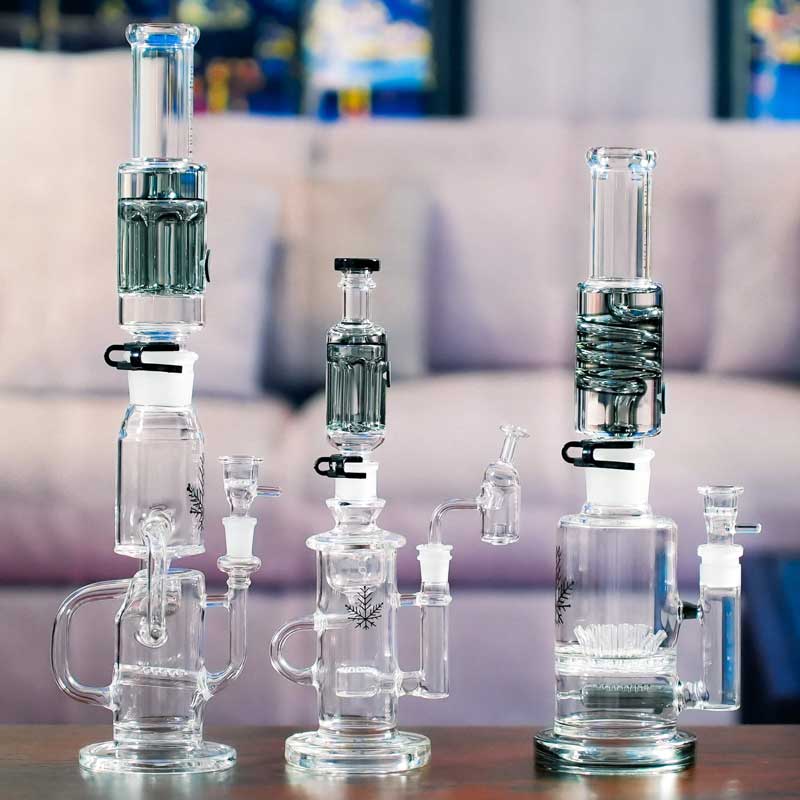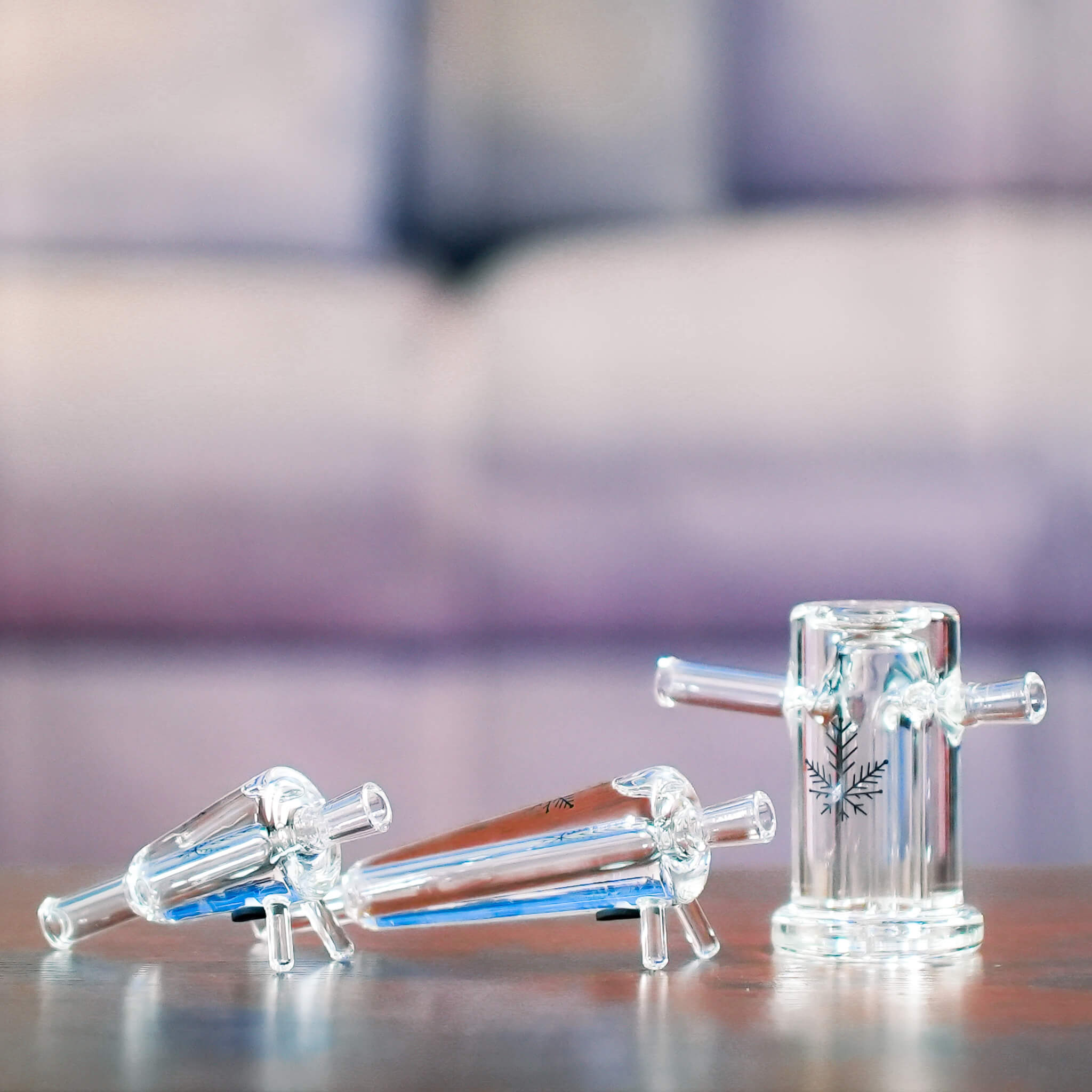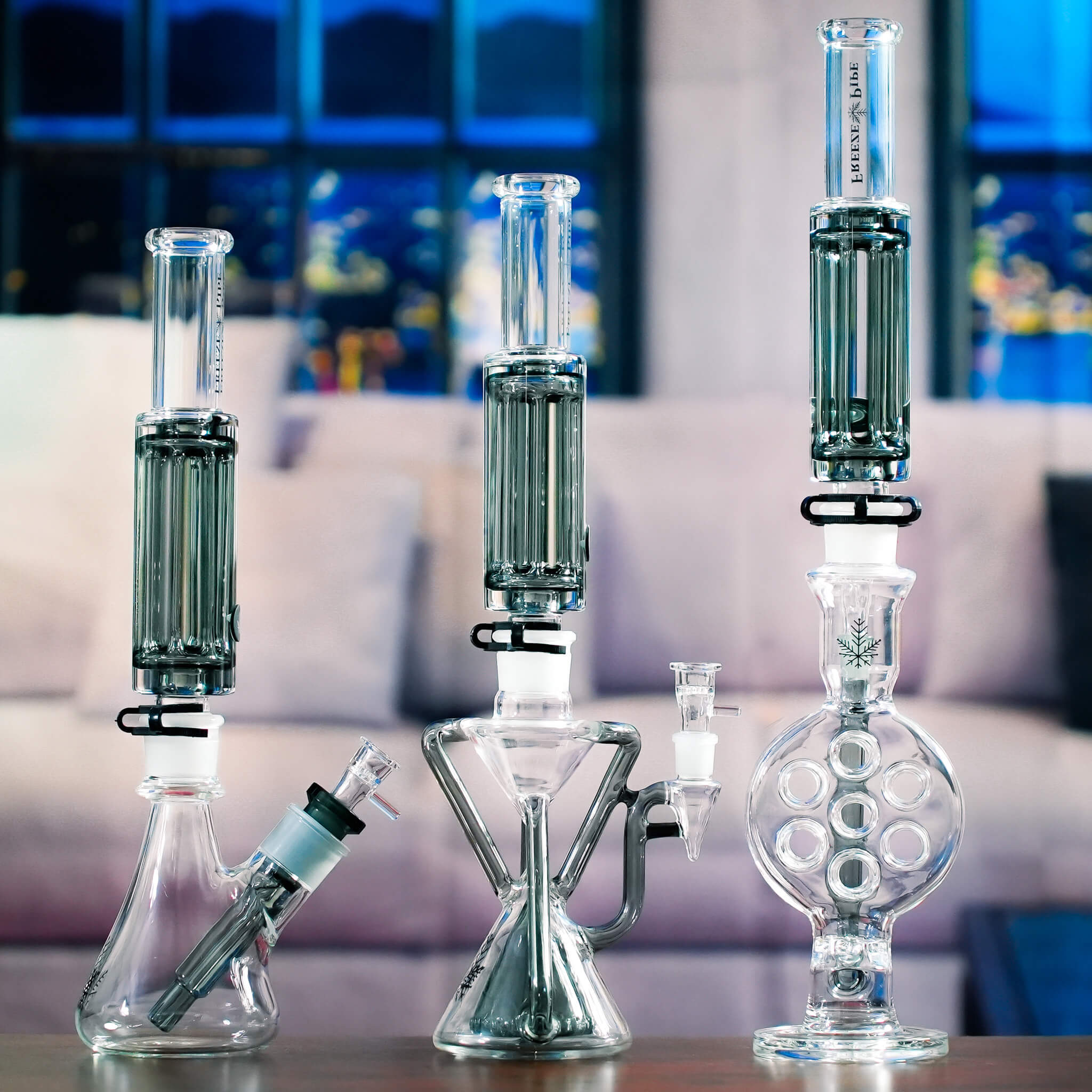Table of Contents:
Water bongs have been used by various civilizations throughout the course of history. They provide a better smoking experience via water filtration which cools smoke and makes a smoother experience. The process of making glass bongs is costly and requires a deep understanding of the skills required, tools needed and a certain level of innate skill and patience. In this blog we'll cover a high-level overview on how glass bongs are made.
Different Materials
First let's take a look at all the materials bongs can be from. Including: Glass, acrylic, ceramic and silicone. Glass bongs are regarded as the best material due to their durability, easy of cleaning and taste. You can spend as little or as much as you want on a water pipe and they can range dramatically in complexity.
The glass used to make bongs is typically borosilicate glass, which is a type of glass that's resistant to thermal shock and chemical corrosion. This makes it ideal for use in bongs, as it can withstand the heat of the smoke and the chemicals from the herbs.
Creating Glass Bongs Step By Step
The process of blowing glass bongs is tedious, dangerous and costly. Many glassblowers rent time at a studio so each minute they spend in the facility costs them money. Also glass breaks while being molded and sculpted and there are no do-overs. It's a hard reality that every second the glassblower works on a bong they run the risk of breaking it and having to start all over. This has negative repercussion for the artist, the brand and consumer.
Step 1 Gather Materials: Such as borosilicate glass tubing, a torch, a graphite paddle, and other tools.
Step 2 Heating: The glassblower heats the glass tubing using a torch, rotating it continuously to ensure even heating. The glass must be heated to a temperature of around 1200 degrees Fahrenheit.
Step 3 Shaping: Once the glass is hot enough the glassblower uses a graphite paddle to mold the design. Additional tools such as pliers, tweezers and specialized devices are used to create specific percolators, downstems, bowls etc. This is usually the longest part of the process and you'll see glassblowers take bongs in and out of the oven dozens of times to fine tune every detail.
Step 4 The Aesthetics: Any colors or decorative aspects are usually added during this step
Step 5 Annealing: In order to prevent faulty glass or easy breaking the bong needs to be annealed. This is done by a glassblower putting the bong in a kiln (basically a specialized oven) where it is slowly cooled over several hours.
Step 6 Wrapping It Up: There is where the final cleaning and branding happens. Small aesthetics like logos are added in this step. If the piece is sandblasted in this step, or really any time after the piece is capable of being sandblasted to create a textured look and feel.






















